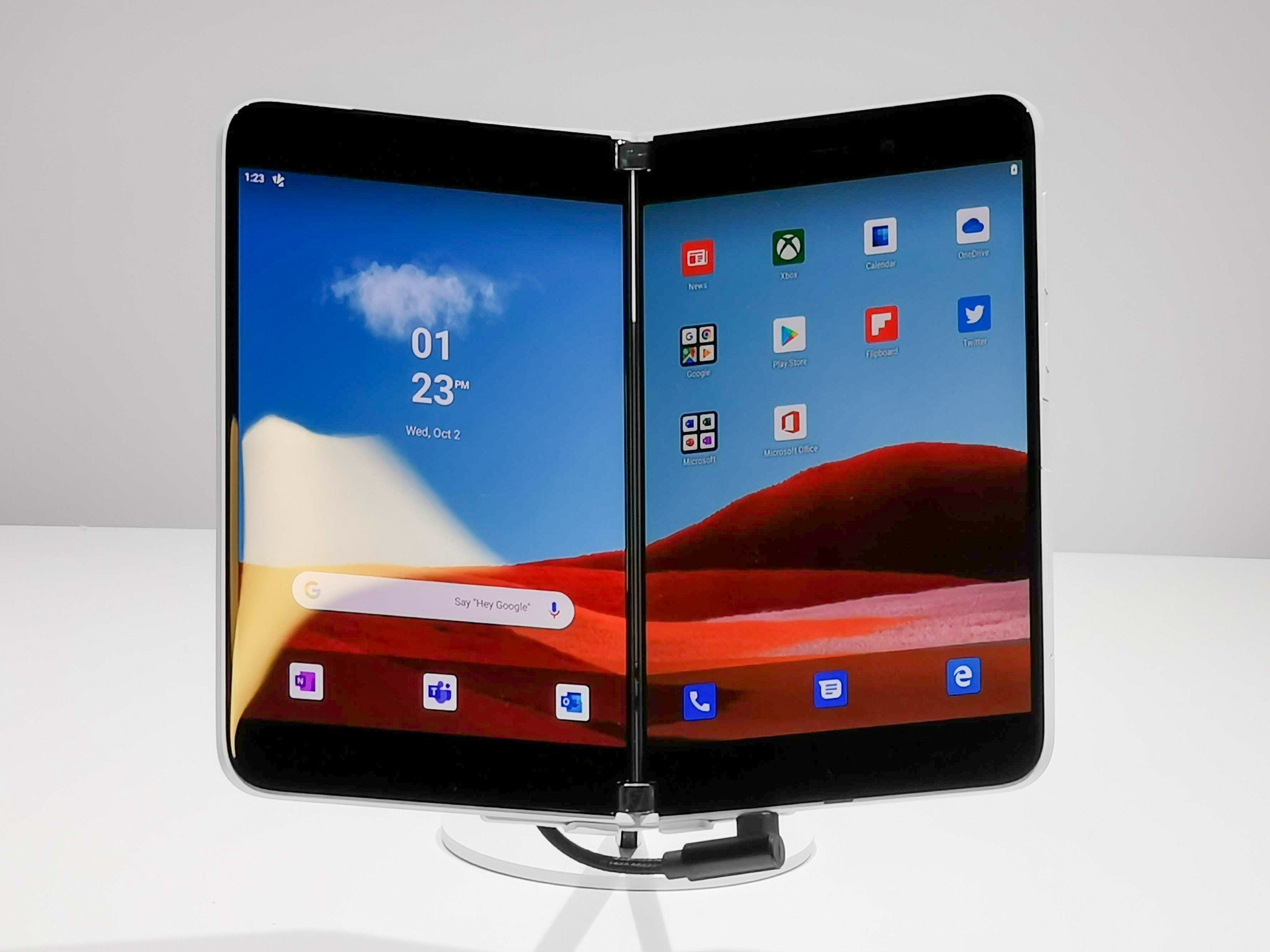From Jerry's article:
...And Microsoft made the internet gasp when it showed off the Surface Duo.
Android has support for foldable screen devices built-in, but it's not very comprehensive. That's why Samsung's apps look and act better on the Fold than most apps from the Play Store do. It all hearkens back to the tablet support thing, where support means it will work, but might not work great. This is because most apps have been designed for a 5-inch or so display and there are things in an app that need to stay in the same place no matter how big you scale it up.
Google did a fine job making sure everything would work. But Microsoft is going a step further for the Surface Duo. And it's a step in the right direction.
When your building apps that stretch across one giant screen or two giant screens with a small bezel in the middle, there's a right way and a wrong way. Stretching out a "regular" app might work, but then again it might not work. When you have that much real estate to work with, you should take advantage of it. It's easy to see what I'm talking about if you've ever used a proper tablet app like Google Play Books or Gmail on a proper tablet.
Columns and rows matter. Where media is placed on the layout matters. Where controls, buttons and gadgets are matters. When your device will be two separate displays like Microsoft's will, it really matters.
That's why Microsoft has already released a preview of the SDK for the Duo, complete with an emulator preview where developers can test how things can be done to take the most advantage of all that screen space. And as a bonus, it is doing the same thing for dual-display Windows 10 devices soon, too.
I covered the launch of Microsoft's Duo Preview SDK here. For such a mature OS as Android, the year's gap between device launch and now SDK and actual retail availability seems unimaginably long. But I suspect it merely reflects the enormity of recoding every application to work optimally with the Duo - Microsoft wants not only all the Google staples, but also both its (Microsoft's) own properties and a healthy number of third party titles, to comply.
The year's delay doesn't necessarily mean that the tech internals of the Duo (Surface Phone) are stuck in 2019 either - so little has been finalised about Microsoft's hardware that it's a certainty that many components will get upgraded before final manufacturing starts in the Autumn 2020.

